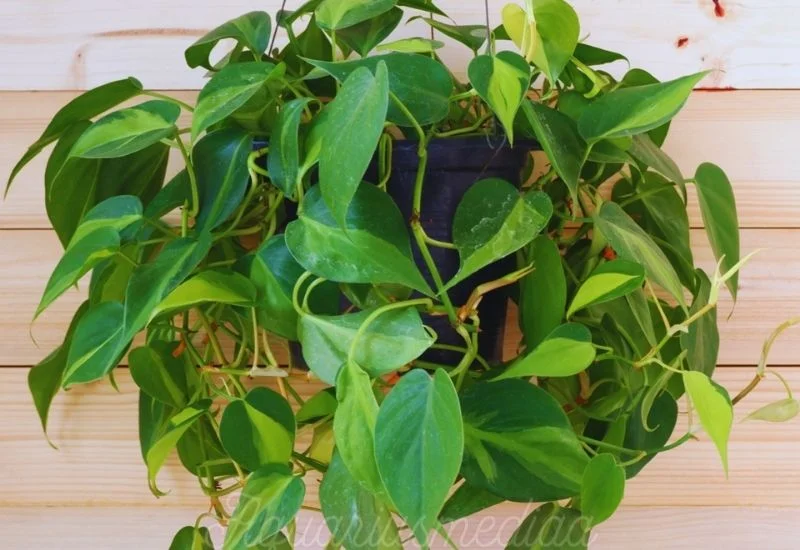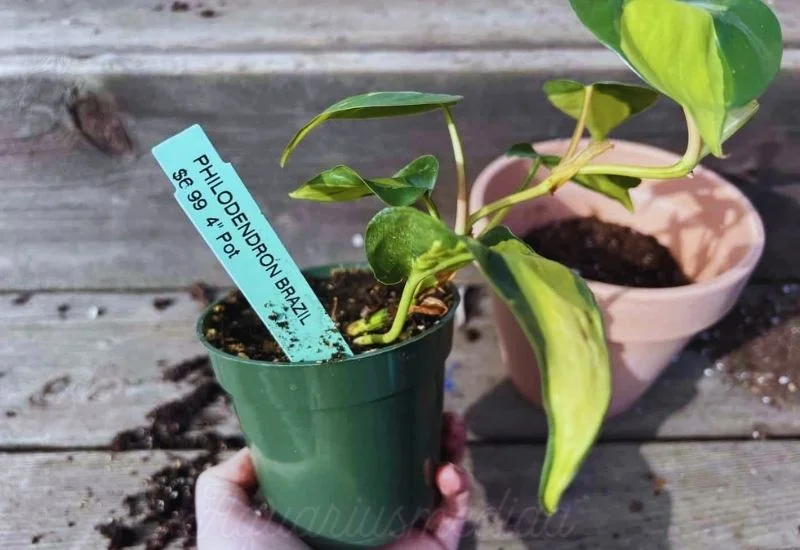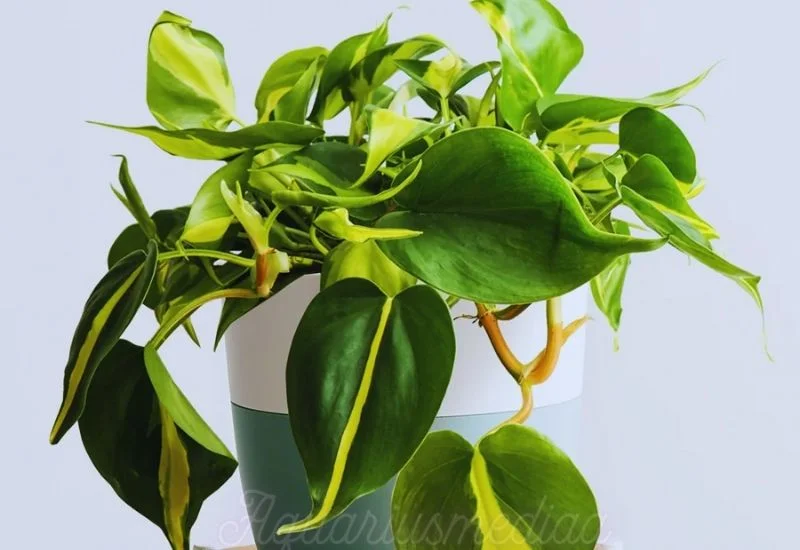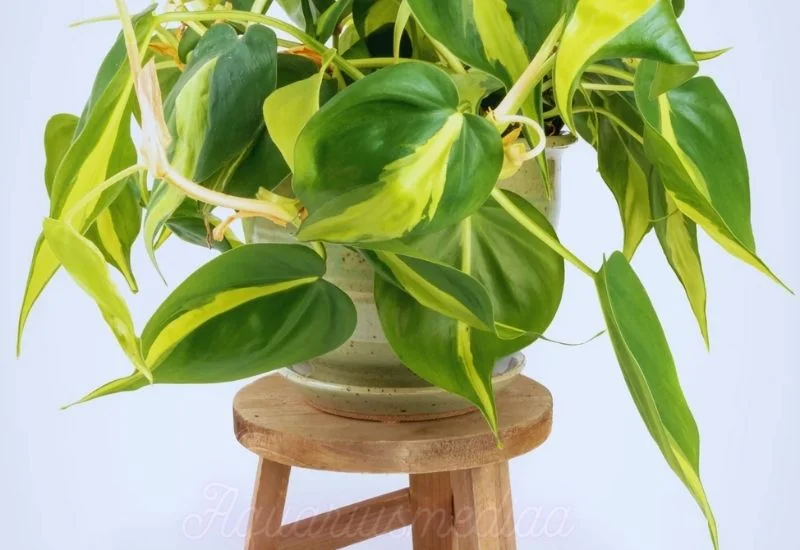In this blog post, you’re going to learn how to easily propagate and care for Philodendron Brasil.
This is a comprehensive guide covering reliable information about different aspects of this variety.
In this post, I’ll cover:
- Interesting Facts
- Propagation
- Repotting
- Care
And
- Solutions to Common Problems
So, if you are looking to propagate and care for Philodendron Brasil, this guide is for you.
Fun Facts
| Common Name | Philodendron Brasil |
| Botanical Name | Philodendron hederaceum |
| Family | Aracae |
| Plant Type | Vine, Perennial |
| Mature Size | Height = 1.2 meters Width = 1.8 meters |
| Sun Exposure | More than eight hours of indirect sunlight |
| Soil Type | Damp and porous |
| Soil pH | Acidic and neutral |
| Native Area | South America |
| Toxic | Toxic to cats and other pets |
| Growing Season | Spring or Summer |
| Growth | Fast |
It known as heart leaf philodendron, is a climbing plant. You will observe yellow and lime-green streams in its large leaves. This fast-growing plant can climb up to 20 feet over the moss poles, pieces of bark or bamboo hoop, and trellises.
Benefits

The vining nature of this plant makes it one of the most attractive plants. It can cover walls, poles, and doors, making them look green and eye-catching. Moreover, it is good at adaptability. It can adapt to various environmental conditions, such as low temperature, less light, and others.
Propagation
The growth rate of hederaceum can vary depending on the light conditions. There are several ways for its propagation. You can place the stem cutting in water, or moist soil, or use any other substrate such as sphagnum moss, fern fibre, leca, etc. However, we will deal with only one method that people mostly use.
- Firstly, cut a part of the stem with some leaves, which is called an offset. Remove the leaves from one side of the cutting without damaging the nodes.
- Place this offset in the clean water. Wait until roots appear on the nodes. It can take up to two weeks for the roots to sprout.
- When the roots reach one inch, you can put that stem cutting in the soft, moist soil. Now keep it damp for the first month. Moreover, to increase humidity levels, people cover it with green plastic to create a greenhouse effect.
In this way, you will have a new Philodendron hederaceum. Now, you can place its pot in a warm spot and regulate the normal conditions.
Easy Tip
Propagate your Philodendron hederaceum in spring or summer.
Repotting

Repotting of this Philodendron species is quite easy. It takes a few steps to repot this plant.
- Analyze the plant to see if it needs to be repotted. You can see its roots if they are sprouting out of the holes of its pot. Other signs are stunted growth and drooping of the leaves.
- Now, try to remove the plant from its pot. You can tilt the pot to pour the soil outside or use a knife to soften the soil around the plant.
- Then, make a soil mixture that is porous, organic, fertile, and can hold water.
- Take a pot of larger size. Three to four inches are enough.
- Now, hold the plant in the center of the new pot. Pour the soil mixture around the plant. You can water the soil to help it settle.
You have successfully completed repotting. Keep the soil moist in the first week. After this, you can continue your previous routine.
Care
This easy to care plant requires few things to consider:
Pruning

Pruning of the this plant is a little tricky.
- Firstly, wash the pair of scissors with a bleach solution to sterilize them.
- Then, identify the parts to be removed, including the withered, diseased, and dead leaves and branches.
- Now, trim these parts from the point of connection between the diseased part and the healthy part. You should not let these diseased parts touch the healthy parts. It can spread the disease.
Soil
This plant, like other philodendron species, needs a potting mix that retains moisture and drains out extra water at the same time. Additionally, it should be organic and fertile. So, for making such a soil mixture, you can use the following constituents:
- One part of potting soil
- One part of the perlite
- One part of orchid bark
However, you can use sphagnum peat moss, peat vermiculite, or peat to enhance the drainage of the soil.
Pot

As this plant is a vine, it can grow in pots and baskets of different sizes, such as 3.5-inch, 4-inch pots, and 4.5-inch, 5-inch, 6-inch, 8-inch hanging baskets.
Water

This vining plant needs moist soil. Otherwise, its leaves turn yellow. Moreover, you have to water the entire plant, not just the single spot of roots. However, some gardeners wait for the drying out of the upper surface to prevent water logging.
You have to water more during the dry season to fulfill plants’ water needs. On the other hand, you can reduce watering in autumn and winter.
Light
This Philodendron can grow at bright indirect light. But its growth rate will be decreased which will result in a smaller plant. Moreover, vines reflect this effect by drooping down.
At the same time, bright sunlight can damaged leaves if exposed for a longer period.
Therefore, you should try to keep this plant two to three feet away from windows that receive direct sunlight and provide medium to bright indirect.
Fertilizer
This plant requires more fertilizers during spring and summer due to its fast growth rate. So, you should fertilize once a month to fulfill its needs. However, during the dormant phase, you can fertilize after every two months.
However, you should select the fertilizer that comes in 20:20:20 NPK. Moreover, the fertilizer must be water-soluble and diluted.
Common Problems
Stunted Growth
Stunted growth is a common issue with Philodendron. In this, plants don’t produce new stems and new leaves. Lack of sunlight can decrease photosynthesis, and plants don’t produce enough food. As a result, the plant stops its growth. So you can solve this problem by changing the spot of the pot.
Drooping of the Leaves
There are several causes behind the drooping of the leaves. Some of the most common are the following.
- Overuse of fertilizer can cause drooping of leaves. In fact, people continue the same routine of fertilization in the dormant phase as they do in the spring season. Plants can’t intake too much of fertilizers. Even these fertilizers can damage roots, resulting in the plant’s death.
- Underwatering and low humidity can cause yellowing and browning of the leaves.
- Overwatering can cause water logging in the soil. It can result in the root rotting.
- These plants make their food through photosynthesis. So, if you don’t provide enough indirect sunlight, their leaves will turn yellow and droop down.
Pests
Pests mainly damage this plant by sucking the sap. Pests utilize the food of the plant and sometimes can eat the leaves. Following is the list of pests that are potential attackers.
- Spider mites
- Scales fruit flies
- Mealybugs
- Aphids
Treatment of these pests is not as difficult. However, it will vary depending on the damage. Firstly, you should keep such plants in a properly aerated place. Then, spray insecticidal soap or neem oil on the areas that have pests. If pests have damaged the whole branch, you can remove it from the rest of the plant.
Varieties & Similar Plants
Philodendron plants mostly have heart-shaped leaves. Moreover, they need similar conditions to thrive. However, you can differentiate them through their variegation and stem structure. Some of the species have permanent variegation, while some can revert to their green color. Furthermore, some of the Philodendrons can crawl, and some cannot. Philodendron Cream Splash and Philodendron Rio are two varieties of Brasil that are similar to a great extent but can be differentiated through some distinctive features.
- Brasil VS P. Rio VS P. Cream Splash
Both Philodendron species are similar in several characteristics. However, you can differentiate them through their leaf structure and color. Brasil has elongated leaves, while Rio has rounded leaves. Moreover, you will observe green and yellow stripes in the leaves of Brasil. On the other hand, the leaves of Rio have green, white, and silver variegation. And there are dark green, light green, cream, and lemon yellow colors in the leaves of Cream Splash.
Ready to Grab a Philodendron Brasil to add beauty to your home garden?
All the above information is reliable, and you’ll see outstanding results if you want to grow or care for this plant.

